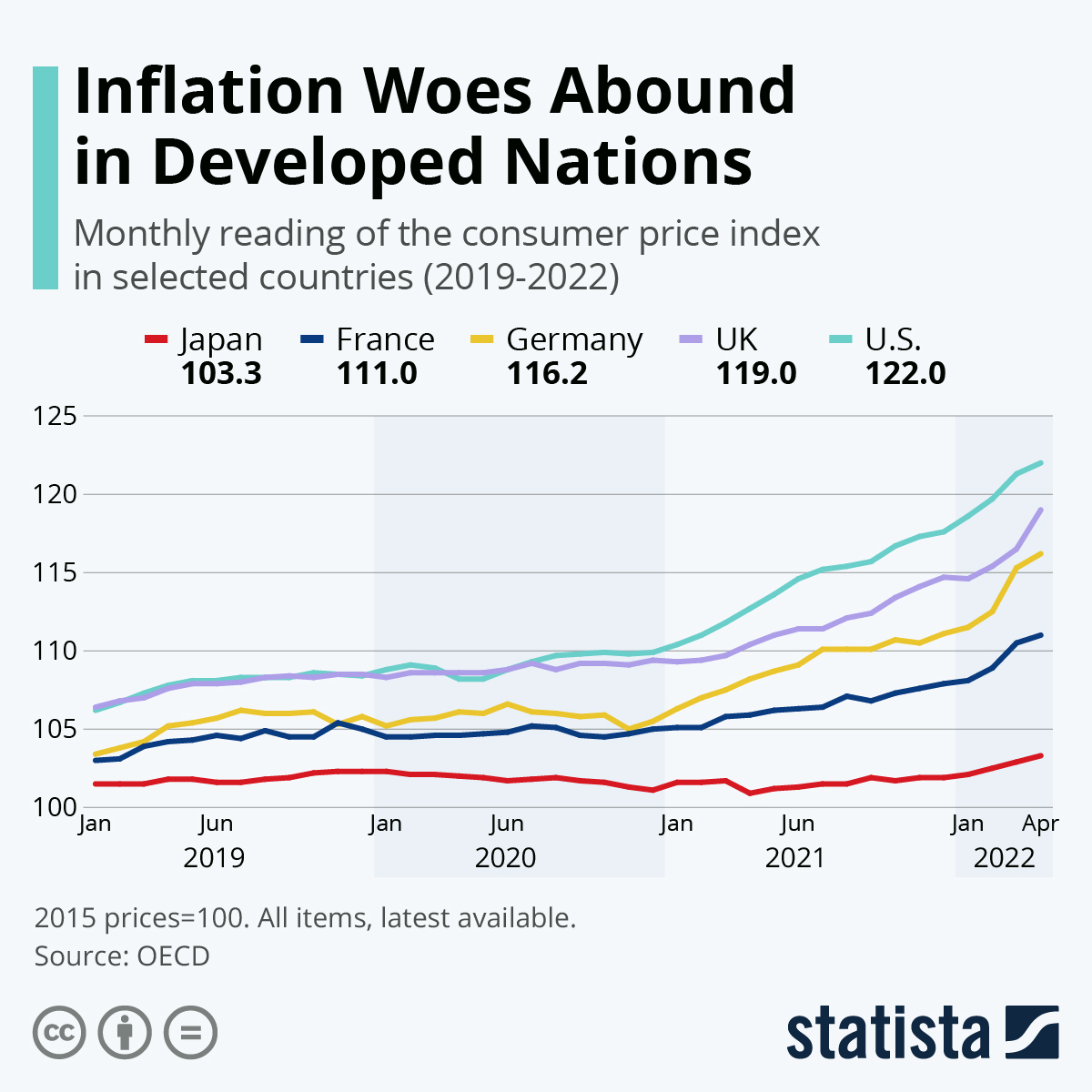Strong economic recovery following the end of the lockdown era of the coronavirus pandemic caused the price of goods and services to rise in 2021 in many developed nations, according to the OECD. Previously, inflation had risen much more slowly and even stagnated during the first year of the pandemic.
Consumers catching up on spending coupled with persistent stock problems created a climate of scarcity as pandemic effects continued to influence the global supply chain last year. The invasion of Ukraine by Russia at the end of February 2022 did the rest to put a real squeeze on the worldwide supply of goods due to ensuing sanctions and Ukrainian products missing from markets. Inflation that was already high ticked upwards even more.
While the U.S. has been hit hardest by this, prices remained more stable in Japan. The country has been super adverse to price increases - they regularly make the news in Japan - and has been avoiding them even in this time of global markets in turmoil. According to the Wall Street Journal, stratified labor markets and companies which save instead of investing have had Japanese economists tear their hair out before, but at least in the current situation, the Japanese low-growth approach has proven advantageous. The effect of the war in Ukraine is visible even in Japanese consumer prices, however.
As of April 2022 - the latest month available -, the Consumer Price Index by the OECD rose by 8.3 percent year-over-year in the United States while in Europe, the increase was between 7.8 percent in the UK, 7.4 percent in Germany and 4.8 percent in France. In Japan, inflation stood at a much lower 2.5 percent.





















